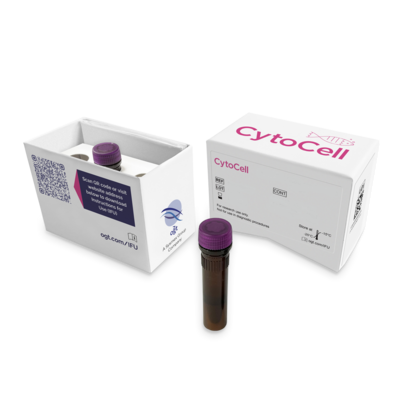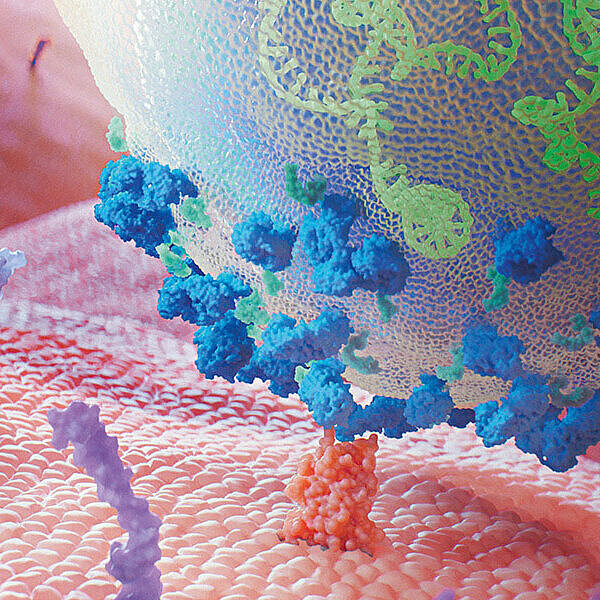Scientific Calendar September 2021
How can lymph node detection and metastatic identification be facilitated in prostate cancer patients?
Using hormonal therapy
Using radiotherapy
Performing pre-op tracer-guided imaging and using a molecular diagnostic test intra- or post-operative
Using digital rectal examination (DRE) and prostate-specific antigen (PSA) test
Congratulations!
That's the correct answer!
Sorry! That´s not completely correct!
Please try again
Sorry! That's not the correct answer!
Please try again
Notice
Please select at least one answer
Why go blind if you can use a map?
In Europe, more than 600,000 men are newly diagnosed with a urological malignancy each year − prostate cancer (PCa) being the most frequent.1 If found early, this kind of cancer is highly treatable and, in some cases, curative with surgery alone.2-3 However, the standard procedure often includes extended pelvic lymphadenectomy (ePLND) which may lead to serious post-surgical morbidity. Currently, a less invasive alternative is being evaluated in several trials, which uses a sentinel lymph node (SLN) biopsy approach, with very promising outcomes.4-6
Indeed, there are alternatives to the radioactive method − current standard used in most tracer-guided lymph node mapping approaches. Sentimag® - Magtrace® system is one of them that detects the sentinel lymph nodes magnetically. The Magtrace® liquid tracer is injected into the prostate pre-operatively. During surgery, the detection of sentinel lymph nodes potentially harbouring metastasis is performed with the help of the magnetometer Sentimag®, which can be used for both in vivo identification and ex vivo confirmation of magnetic lymph nodes. Using this approach, one pilot study involving 19 patients showed a median detection of 7 SLNs, whereas the median of excised lymph nodes from ePLND was 17.7 A follow-up study involving 50 patients was conducted, showing a detection rate of 100% and a median of 9 excised SLNs.8
A pre-operative mapping via visualisation of the lymph nodes can further facilitate the identification – even beyond the patterned areas often used to perform ePLND. After transrectal injection of Magtrace® into the prostate, a pre-operative MRI maps out the sentinel nodes due to the uptake of superparamagnetic iron oxide particles (SPIO) and can be used as further guidance to the nodes of interest during surgery.9
Revealing the whole picture
Metastatic cancer spread to lymph nodes (LN) is a pivotal prognostic factor in prostate cancer; hence, correct assessment of the nodal status is paramount for adjuvant treatment planning. Current histopathological assessment of dissected nodes comprises H&E staining of a few tissue sections often leaving small metastases undetected, thus impairing staging accuracy. Moreover, despite being more sensitive, histopathological serial sectioning and immunochemistry are known to be labour-intensive and time-consuming, therefore not suitable for intraoperative use.
To overcome such limitations, OSNA (one step nucleic acid amplification) constitutes an optimal solution. It is a rapid, easy-to-use, highly sensitive and standardised molecular diagnostic which allows quantification of total tumour load in the entire LNs, especially for low-volume disease. Using OSNA for intraoperative diagnostics can support PCa personalised lymph node surgery. Additionally, OSNA improves nodal staging in PCa while reducing pathologists’ workload, as most processes are automated and can be performed with minimal effort by a skilled technician.10
Sentimag® - Magtrace® system combined with OSNA diagnostic offers a specific SLN localisation and an extremely sensitive intraoperative whole node analysis. This enables accurate nodal staging and provides clinicians a reliable basis for patient-individual treatment decisions.10
References
- Ferlay J et al. (2013): Cancer incidence and mortality patterns in Europe: estimates for 40 countries in 2012. Eur J Cancer. 49(6):1374–1403.
- Bekelman JE et al. (2018): Clinically Localized Prostate Cancer: ASCO Clinical Practice Guideline Endorsement of an American Urological Association/American Society for Radiation Oncology/Society of Urologic Oncology Guideline. J Clin Oncol. 36(32):3251–3258.
- Mottet N et al. (2017): EAU-ESTRO-SIOG Guidelines on Prostate Cancer. Part 1: Screening, Diagnosis, and Local Treatment with Curative Intent. Eur Urol. 71(4):618–629.
- van der Poel HG et al. (2017): Sentinel Node Prostate Cancer Consensus Panel Group members. Sentinel node biopsy for prostate cancer: report from a consensus panel meeting. BJU Int. 120(2):204–211.
- van der Poel HG et al. (2017): Sentinel node biopsy and lymphatic mapping in penile and prostate cancer. Urologe A. 56(1):13–17.
- Wit EMK et al. (2017): Sentinel Node Procedure in Prostate Cancer: A Systematic Review to Assess Diagnostic Accuracy. Eur Urol. 71(4):596–605.
- Winter A et al. (2014): A novel method for intraoperative sentinel lymph node detection in prostate cancer patients using superparamagnetic iron oxide particles and a handheld magnetometer: The initial clinical experience. Ann Surg Oncol. 21:4390–4396.
- Winter A et al. (2016): Magnetometer guided sentinel lymphadenectomy after intraprostatic injection of super-paramagnetic iron oxide nanoparticles in intermediate and high-risk prostate cancer patients. J Urol. 195 (Suppl. 4):e987.
- Winter A et al. (2016): Magnetic resonance sentinel lymph node imaging in prostate cancer using intraprostatic injection of superparamagnetic iron oxide nanoparticles: The first in-human results. Eur Urol Suppl. 15 (Suppl. 3):1060.
- Engels S (2021): Evaluation of Fast Molecular Detection of Lymph Node Metastases in Prostate Cancer Patients Using One-Step Nucleic Acid Amplification (OSNA). Cancers. 13(5):1117.
Endomag®, Sentimag® and Magseed® are registered European Union trade marks of Endomagnetics Ltd · www.endomag.com
Magtrace® is a registered trade mark of Endomagnetics Ltd in the United Kingdom · www.endomag.com


